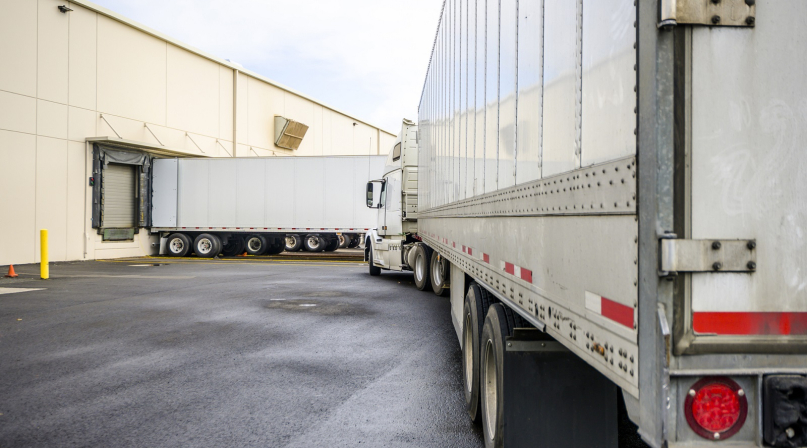Weighing retail warehouse boom: Jobs, revenue vs. traffic, pollution
Author
Upcoming Events
Related News

Key Takeaways
Northampton County, Pa. “is in the heart of the Boston-Washington corridor, the beating heart of it,” said County Executive Lamont G. McClure. Located near large population centers, with highways that provide easy access, it’s an ideal location for distribution centers.
McClure sees the upside of the warehouse fulfillment jobs brought in by online retailers. They help offset the many manufacturing jobs that have left Lehigh Valley over the years.
But Northampton County also has “a great deal of farmland,” McClure noted, and “my job is to balance the preservation of land and jobs and economic development. We have enough warehouses. It’s eating up our spaces. We need to stop that.”
The pandemic has spurred an already growing market for online buying. Forbes reported that in 2020, the top 500 North American retailers generated $849.5 billion in online sales, up 45.3 percent from 2019.
That increase in online shopping translates into a need for additional distribution centers. Almost 2 billion square feet of warehouse space has been built in the United States in the last five years, according to research by CoStar, which provides real estate analytics and marketing services.
In Northampton County, “folks are cognizant that we’ve got enough warehouses,” McClure said. “Our folks are fed up with truck traffic. It’s dangerous. Roads are congested. There’s the pollution…. I don’t denigrate the work, but we are importing workers now” to meet the demand.
Pennsylvania is a right-to-develop state and zoning is done at the municipal level, he said, “but the county has some weapons. We have $3 million a year from our general fund to put into land preservation. You need to put your money where your mouth is. We’re fighting back, preserving open and green spaces.”
McClure — who was first elected to oversee county operations in 2017 and was reelected last year — has spent $12 million from the general fund in the past four years to help protect the area’s rural character. “We just bought our 20,000th acre of farmland.”
Where zoning can be done at the county level, McClure recommends “directing industrial development to certain areas where they belong, hopefully in former brownfields.”
He also urged counties to work together “and direct where they want their industrial zone,” the way Northampton County has worked with neighboring Lehigh County in Lehigh Valley.
Inland Empire growth
On the West Coast the Inland Empire — made up of Riverside and San Bernardino counties — county officials also are looking to find a balance. An estimated 40 percent of the nation’s consumer goods come through the region, according to Bloomberg News.
From 2004 to 2020, the Inland Empire’s logistics space roughly doubled to about 600 million square feet, according to CBRE, a commercial real estate firm. The number of distribution centers grew 54 percent, from 463 in 2009 to 711 in 2020, according to Statista, a market and consumer data firm.
San Bernardino County Supervisor Curt Hagman has called the growth “a net positive” for the county, one that supports other parts of the local economy.
But some citizens and officials question whether the benefits of tax dollars and new jobs outweigh the problems of the increased traffic and pollution in an area of the country that ranks as one of the worst for air quality.
Last year, the South Coast Air Quality Management District board passed the Warehouse Indirect Source Rule, to reduce heavy-duty vehicle emissions around warehouses in Southern California.
The rule includes the Warehouse Actions and Investments to Reduce Emissions (WAIRE) program, which creates a points system that provides financial incentives to reduce emissions from trucks entering and leaving warehouses. Warehouses that do not accumulate enough points each year are hit with a “mitigation fee.”
Riverside County Supervisor Kevin Jeffries has spoken out against the rapid growth of these warehouses.
Last fall he told the newspaper The Press-Enterprise: “I would argue that “the county for many years had the welcome mat out for logistics and perhaps you could argue still does.”
In 2019, Jeffries proposed — and the Riverside County Board of Supervisors passed — a “Good Neighbor Policy” that called for a 300-foot minimum distance between warehouse loading docks and schools and residences.
The board added a provision that supervisors could decide whether to enact the rules in their districts.
In March 2020, Riverside County passed a 45-day moratorium on warehouse building on the county’s northside.
Several months later, San Bernardino County fell one vote short of passing a similar 45-day moratorium on construction of new warehouses. Colton, a city in San Bernardino County, has passed its own moratoriums.
Crowded Mid-Atlantic
In the mid-Atlantic region, companies initially opted to build distribution centers in Pennsylvania and New Jersey, which have larger populations and space along the interstate, said New Castle County, Del. Council President Karen Hartley-Nagle. But with less room available there now, “The First State” has become an attractive alternative.
The space under construction at the beginning of this year in New Castle County exceeded the amount of space built in Delaware in the past 20 years, according to a report from Newmark, a real estate brokerage in Wilmington.
“Mostly we’re seeing the pros,” in terms of jobs and tax revenues, Hartley-Nagle said. “Properties are zoned for these uses. It’s already in our comprehensive plan. They bring jobs and tax revenues.”
The county government process allows for a good discussion of the pros and cons, she said. “I’ve participated in many of the public meetings. I think most people are pretty happy with the comprehensive plan. They feel the direction we’re going in is right.”
But there are problems, and the conversations continue. “It affects everybody in the county in different ways,” she said, adding that the traffic and pollution is particularly hard on poor communities.
“Traffic needs to be managed. We look at what we need to do for the surrounding areas with berms, landscaping. You want to mitigate the sound and also make it so you don’t have to see them. You don’t want to be looking out your back door and see that.”
Now, with space in New Castle County drying up, companies “are looking farther south,” Hartley-Nagle said. But farther south in Delaware means heavy beach traffic.
One company has found an alternative within the county. Instead of repurposing an old manufacturing site, it’s transforming the Tri-State Mall in Claymont, Del.
“There had been a mall there that had been empty. They couldn’t get anything good to go in there. Now it’s a logistics center,” she said.
With freshened up landscaping, the old bricks-and-mortar shopping mall is now “so much better,” Hartley-Nagle said. The distribution centers that are cropping up because of the growth of online shopping “can actually spur improvement.”
Attachments
Related News

Counties and Railroads: Shared Priorities for the Next Surface Transportation Bill
County leaders from across the country have a vital opportunity to ensure their infrastructure priorities are front and center.

House reintroduces bipartisan legislation to level playing field for rural communities
House reintroduced the Rural Partnership and Prosperity Act, bipartisan legislation intended to advance economic development in rural counties and overcome barriers to obtaining federal funding and resources.

Podcast: Eastern Tennessee counties invest in tourism during shutdown
Sevier County, Tenn. refused to let the government shutdown devastate its fall tourism draw—Great Smoky Mountains National Park. County Mayor Larry Waters describes the lengths he and his neighbors went to keep the park open. And NACo Chief Government Affairs Officer Mark Ritacco offers an outlook on what counties can take away from the shutdown and into the future.
